Magnum photographer Stuart Franklin talks CineStill, film and experimentation
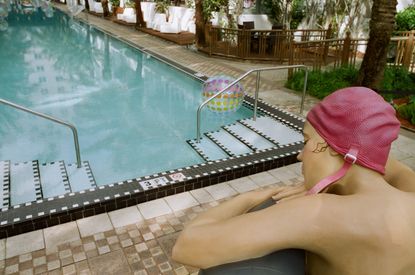
Founded by Los Angeles-based twin brothers Brandon and Brian Wright, CineStill bridges the gap between the big screen and photography with reverse-engineered Kodak motion picture film. After several years of experimentation (and thousands of feet of wasted film), the brothers developed a method for removing the rem-jet layer of cinema film without disturbing the sensitive emulsion and making it safe for typical C-41 processing.
It’s a welcome breakthrough for photographers still dabbling in analogue, who are rarely able to celebrate new offerings these days, in terms of film, equipment or otherwise. ‘Today, CineStill brings the wonders of cinema film technology to the still photographer,’ explain the brothers. ‘Now, anyone can use film in the same lighting situations as new blockbuster movies and TV shows.’
To wit, Magnum photographer Stuart Franklin has been on the road for over a month, testing CineStill’s 35mm 50 ASA Daylight and 800 ASA Tungsten films (along with a beta 120 film – unavailable to the public). He shared the results of his adventures with us, from a Magnum board meeting in Brooklyn, to a retreat in Miami and days off photographing in Malta and Oxford.
Captured through an enviable array of razor-sharp, crystal-clear Zeiss lenses, Franklin’s observations include the open window of his hotel room and a troop of Santas in New York, while an image of a sandstone cast in sunlight does well to show off CineStill’s magnificent tonal range. ‘The main thing with the 50 is that for a slow film it is quite low in contrast and seems very true to way I see colour, for the most part at least,’ explains London-born Franklin, who compares CineStill to transparency film and Kodak Portra.
The main difference, however, is in CineStill’s ability to hold a neutral tone in shadows. ‘In my 35 years career as a photographer, getting the shadows to open in colour photography has always been a challenge,’ he adds. ‘Before digital we had a great film by Fuji – Astia 100 – that could do that, but sadly it is discontinued.’
Digital photography may have already reached its tipping point. But initiatives such as CineStill (or even the Impossible Project, an independent revival of Polaroid film and cameras) will help cement analogue’s position in an increasingly digital world.

Franklin has captured an eclectic range of images, from a Magnum board meeting in Brooklyn, to a retreat in Miami and days off photographing in Malta and Oxford.

CineStill is a company that removes the rem-jet layer of cinema film without disturbing the sensitive emulsion and makes it safe for typical C-41 processing.
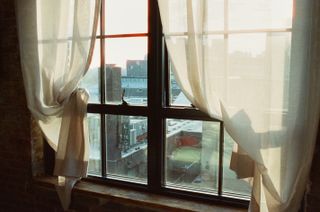
Captured through an enviable array of razor-sharp, crystal-clear Zeiss lenses, Franklin’s observations include the open window of his hotel room...

...and a troop of Santas roaming the streets in New York.

Franklin has recently been testing CineStill’s 35mm 50 ASA Daylight and 800 ASA Tungsten films (along with a beta 120 film – unavailable to the public).
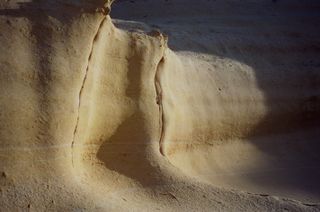
An image of a sandstone cast in sunlight does well to show off CineStill’s magnificent tonal range.

'Cinestill 50 and 800 are quite special films, I think,' explains Franklin. 'I compare them to using transparency film and [Kodak] Portra over the years.'

Franklin's work in Oxford is the beginning of a larger project.

The London-born photographer describes the film as 'very true to the way he sees colour'.
INFORMATION
For more information and stockists, visit the CineStill website
Wallpaper* Newsletter
Receive our daily digest of inspiration, escapism and design stories from around the world direct to your inbox
-
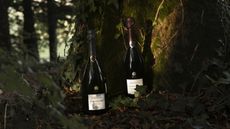 Why Bollinger’s La Grande Année 2015 champagne is worth celebrating
Why Bollinger’s La Grande Année 2015 champagne is worth celebratingChampagne Bollinger unveils La Grande Année 2015 and La Grande Année Rosé 2015, two outstanding cuvées from an exceptional year in wine-making
By Melina Keays Published
-
 Lexus installation explores time at Milan Design Week 2024
Lexus installation explores time at Milan Design Week 2024Lexus brought designer Hideki Yoshimoto’s ‘Beyond the Horizon’ to Milan’s Art Point, part of its ongoing series of collaborations with Fuorisalone
By Nargess Shahmanesh Banks Published
-
 Cult 1960s boutique Granny Takes A Trip gets a sustainable reboot
Cult 1960s boutique Granny Takes A Trip gets a sustainable rebootFounded on King’s Road in 1966, ‘radically creative’ fashion store Granny Takes A Trip is being reimagined for a new generation. Dal Chodha takes a closer look
By Dal Chodha Published
-
 Cyprien Gaillard on chaos, reorder and excavating a Paris in flux
Cyprien Gaillard on chaos, reorder and excavating a Paris in fluxWe interviewed French artist Cyprien Gaillard ahead of his major two-part show, ‘Humpty \ Dumpty’ at Palais de Tokyo and Lafayette Anticipations (until 8 January 2023). Through abandoned clocks, love locks and asbestos, he dissects the human obsession with structural restoration
By Harriet Lloyd-Smith Published
-
 Year in review: top 10 art interviews of 2022, chosen by Wallpaper* arts editor Harriet Lloyd-Smith
Year in review: top 10 art interviews of 2022, chosen by Wallpaper* arts editor Harriet Lloyd-SmithTop 10 art interviews of 2022, as selected by Wallpaper* arts editor Harriet Lloyd-Smith, summing up another dramatic year in the art world
By Harriet Lloyd-Smith Published
-
 Yayoi Kusama on love, hope and the power of art
Yayoi Kusama on love, hope and the power of artThere’s still time to see Yayoi Kusama’s major retrospective at M+, Hong Kong (until 14 May). In our interview, the legendary Japanese artist vows to continue to ‘create art to leave the message of “love forever”’
By Megan C Hills Last updated
-
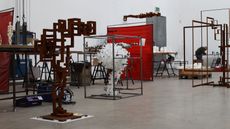 Antony Gormley interview: ‘We’re at more than a tipping point. We’re in a moment of utter crisis’
Antony Gormley interview: ‘We’re at more than a tipping point. We’re in a moment of utter crisis’We visit the London studio of British sculptor Antony Gormley ahead of his major new show ‘Body Field’ at Xavier Hufkens Brussels
By Harriet Lloyd-Smith Last updated
-
 Photographer Maisie Cousins on nostalgia, impulsive making and ‘collecting useless things’
Photographer Maisie Cousins on nostalgia, impulsive making and ‘collecting useless things’Explore the vision of British artist Maisie Cousins in ‘Through the lens’, our monthly series spotlighting photographers who are Wallpaper* contributors
By Sophie Gladstone Last updated
-
 Rashid Johnson in Menorca: a journey through migration, longing and togetherness
Rashid Johnson in Menorca: a journey through migration, longing and togethernessWe visited Rashid Johnson’s Brooklyn studio ahead of the artist’s show at Hauser & Wirth Menorca, which contemplates drift – physical and emotional
By Osman Can Yerebakan Published
-
 Step inside the kaleidoscopic universe of Pipilotti Rist
Step inside the kaleidoscopic universe of Pipilotti RistSwiss artist Pipilotti Rist, who headlines Wallpaper’s November 2022 issue, has transformed the way we see, with a poetic yet playful practice spanning three decades. Here, and in a special portfolio, she reveals how she has liberated video art from its conventions, imbued the digital realm with emotion, animated public spaces, and harnessed the healing powers of colour
By Jessica Klingelfuss Last updated
-
 Gathering: the new Soho gallery blending art and social activism
Gathering: the new Soho gallery blending art and social activismGathering, the newest gallery resident in London’s Soho, will focus on contemporary art exploring systemic social issues. Ahead of Tai Shani’s inaugural show, we speak to founders Alex Flick and Trinidad Fombella about their vision for the gallery
By Harriet Lloyd-Smith Last updated